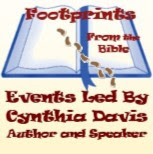Last week I mentioned the Episcopal Church, and Presiding
Bishop Michael Curry’s, Way of Love.
What exactly is that, you might ask. It is simply a form of a Rule of Life
encompassing: Worship, Go, Learn, Pray, Bless, Turn, Rest. You’ll notice there
are 7 parts, and there are 7 days of a week. That’s so the Rule of Life fits
neatly into your week.
First, though, what is a “Rule of Life”? Often, we think of
monastics, or priests, or other ‘religious folks’ as the only ones who have a
Rule of Life. This can be something set up by their Order or ordination.
However, each of us has a Rule of
Life, whether you’ve ever thought of it that way or not. If you read your
Bible, or a devotional book, or do some journaling, or have a quiet few minutes
to pray then you have a Rule of Life.
According to the Journeying
the Way of Love, Advent Curriculum (by Jenifer Gamber & Becky Zartman; Copyright
© 2018 by The Episcopal Church, 815 2nd Ave, New York, NY 10017) a Rule of Life
is “not just a set of rules to live by; rather, it is a gentle framework to
guide and support us on our way [that] It helps us clarify our most important
values, relationships, dreams, and work.” The authors point out “a rule of life
[is] commitments to regular practices.” It can include, so called, secular
activities like exercise or eating dinner as a family.
The Way of Love as
outlined by the Episcopal Church is a Rule of Life with the goal of helping us
grow in our relationship with God, ourselves, and others. According to the
Advent curriculum, “The Way of Love invites us to a rule of life that leads to
incarnating Divine Love in the world, so it is appropriate to initiate a
journey on the Way of Love during Advent, the season we slow down to get ready
to welcome Jesus, God incarnate, anew.”
Let’s review the seven parts of the Way of Love Rule of Life
and what they mean.
Sunday, we are invited to Worship as an intentional
way to gather in community with and before God. “As we break bread, our eyes
are opened to the presence of Christ. By the power of the Holy Spirit, we are
made one body, the body of Christ sent forth to live the Way of Love.”
Monday calls us to Go across boundaries and live like
Jesus. “He sends us beyond our circles and comfort, to witness to the love,
justice, and truth of God with our lips and with our lives…to join God in
healing a hurting world [and] to become Beloved Community, a people reconciled
in love with God and one another.”
Tuesday reminds us that we must Learn. The authors of the
curriculum note, “When we open our minds and hearts to Scripture, we learn to
see God’s story and God’s activity in everyday life.”
Wednesday, the middle of the week, is a time to remember to Pray.
Prayer is an offering of our thanksgivings and concerns to God while listening
for God’s voice in our lives. “When we pray
we invite and dwell in God’s loving presence.”
Thursday is a time to Bless by sharing our faith and
unselfishly serving. The authors note, “We are empowered by the Spirit to bless
everyone we meet…and to share our stories of blessing and invite others to the
Way of Love.”
Friday is a day to Turn and take a break. “With God’s
help, we can turn from the powers of sin, hatred, fear, injustice, and
oppression toward the way of truth, love, hope, justice, and freedom. In
turning, we reorient our lives to Jesus Christ, falling in love again, again,
and again.”
Saturday is a day of Rest when we can be restored by
God’s grace and peace. This is an invitation to an intentional time “for
restoration and wholeness…[because] by resting we place our trust in God, the
primary actor who brings all things to their fullness.”
In preparation for Advent, consider what your current Rule
of Life is-both secular and spiritual. To help with that, you can download the weekly
planner page for this week. You’ll notice the theme for the week is
Preparation. Isaiah 40:3 calls us to Hear “the
voice of someone shouting, "Clear the way through the wilderness for the
LORD! Make a straight highway through the wasteland for our God!”
Are there parts of your life that might be called
‘wasteland’?
Can you make a straight ‘highway’ for God to enter your
heart this Advent?
What changes might you want to make or include in
preparation for Christmas?
I invite you to join me in journeying the Way of Live this Advent using the Advent calendar incorporated in the weekly planner pages available,
with some additional hints, from this blog during Advent. Download the first page to get started on the journey.
Or gather in a small
group to follow the curriculum itself. Perhaps you would prefer to simply download the Advent calendar follow it through the next four weeks with the following topics:
• Advent One: The
Annunciation: Saying “Yes” to the Journey
• Advent Two: Mary and
Elizabeth: Journeying with Family and Friends
• Advent Three: The
Birth of John the Baptist: Journeying with Community
• Advent Four: The
Birth of Jesus: Journeying with the World




